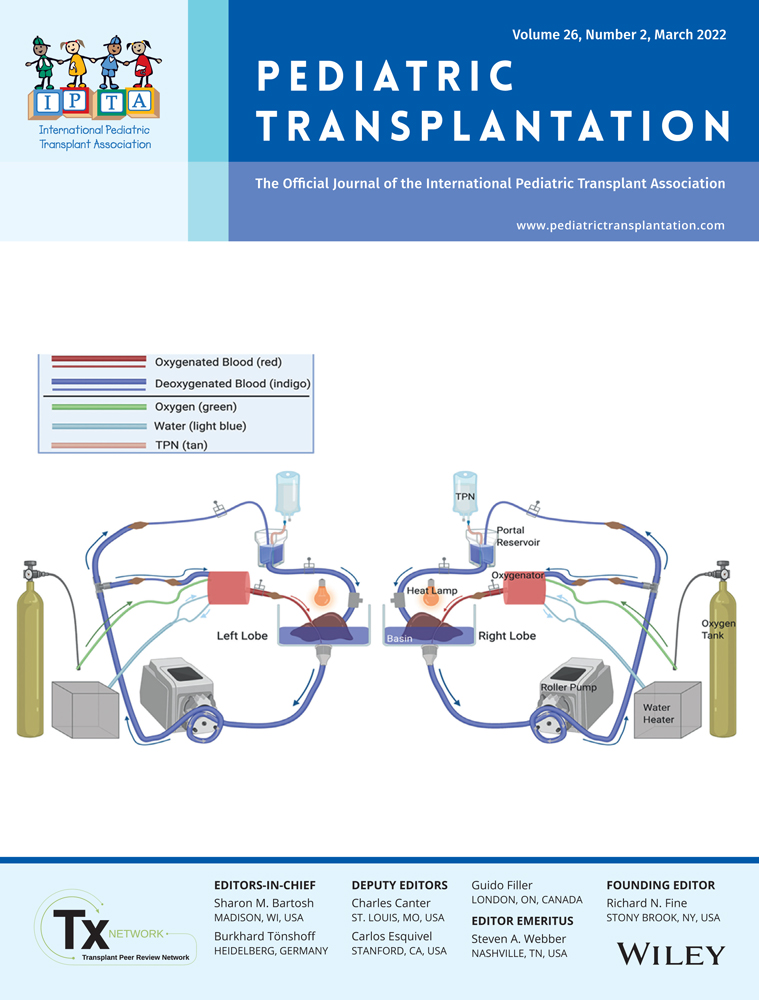Decreased access to pediatric liver transplantation during the COVID-19 pandemic
Abstract
Background
The COVID-19 pandemic has affected all aspects of the US healthcare system, including liver transplantation. The objective of this study was to understand national changes to pediatric liver transplantation during COVID-19.
Methods
Using SRTR data, we compared waitlist additions, removals, and liver transplantations for pre-COVID-19 (March-November 2016–2019), early COVID-19 (March-May 2020), and late COVID-19 (June-November 2020).
Results
Waitlist additions decreased by 25% during early COVID-19 (41.3/month vs. 55.4/month, p < .001) with black candidates most affected (p = .04). Children spent longer on the waitlist during early COVID-19 compared to pre-COVID-19 (140 vs. 96 days, p < .001). There was a 38% decrease in liver transplantations during early COVID-19 (IRR 0.62, 95% CI 0.49–0.78), recovering to pre-pandemic rates during late COVID-19 (IRR 1.03, NS), and no change in percentage of living and deceased donors. White children had a 30% decrease in overall liver transplantation but no change in living donor liver transplantation (IRR 0.7, 95% CI 0.50–0.95; IRR 0.96, NS), while non-white children had a 44% decrease in overall liver transplantation (IRR 0.56, 95% CI 0.40–0.77) and 81% decrease in living donor liver transplantation (IRR 0.19, 95% CI 0.02–0.76).
Conclusions
The COVID-19 pandemic decreased access to pediatric liver transplantation, particularly in its early stage. There were no regional differences in liver transplantation during COVID-19 despite the increased national sharing of organs. While pediatric liver transplantation has resumed pre-pandemic levels, ongoing racial disparities must be addressed.
CONFLICT OF INTEREST
The authors of this manuscript have no conflicts of interest to disclose as described by the American Journal of Transplantation.
Open Research
DATA AVAILABILITY STATEMENT
The raw data that support the findings of this study are available in the SRTR/OPTN database at http://www.srtr.org/. Derived data supporting the findings of this study are available from the corresponding author [AF] on request.




